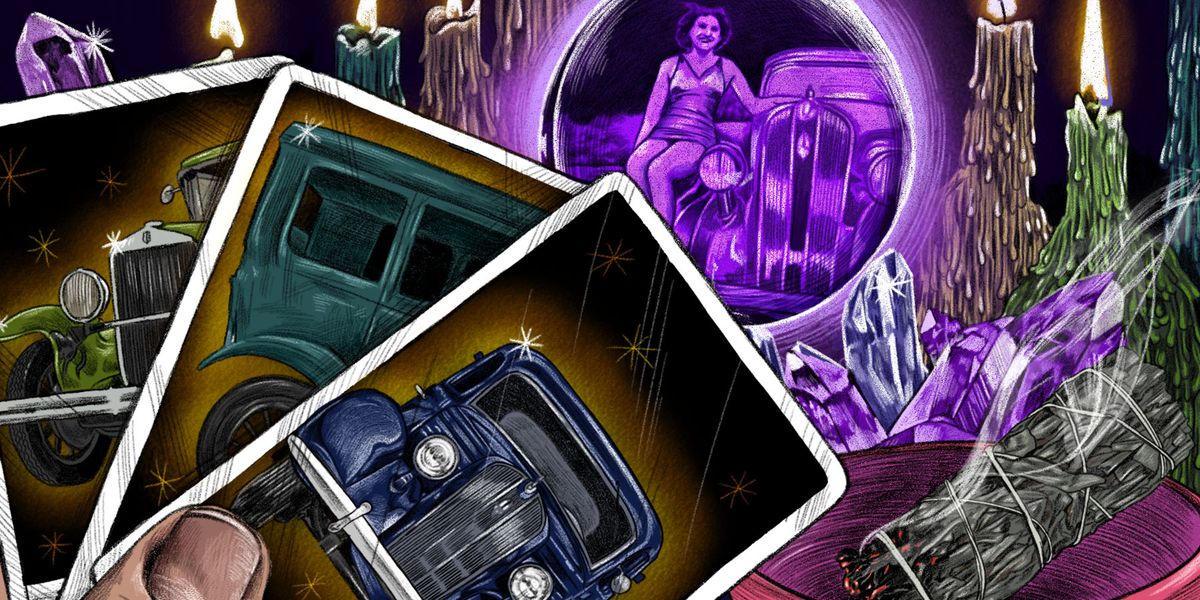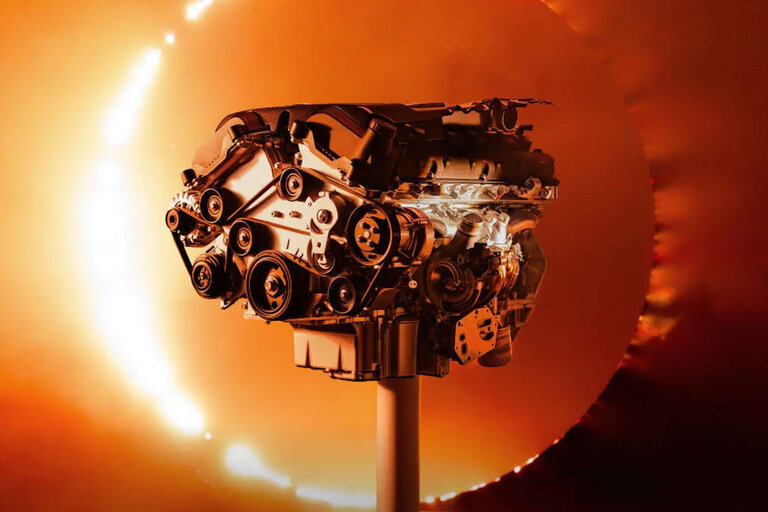
From the May 2023 issue of Car and Driver.
Do not tell people I’m an expert,” says David Burge. “I’m just a reasonably okay amateur when it comes to identifying cars.” Okay. Burge is not an expert, but he’s awfully good at figuring out the make and model of an automobile from just the smallest corner of a bumper. “A ’25 Hudson,” he’ll declare on a blurry snapshot showing an embossed curve of fender and a single open door. “It’s the suicide door,” he explains later, “a rarity in the ’20s.”
Those “reasonably okay” car ID skills have made Burge a bit of a celebrity in a certain nerdy corner of the internet. Every weekend, as @iowahawkblog on Twitter, he takes on the task of naming the manufacturers and years of cars in photos submitted to him from all over the world. Sometimes they are old advertisements or newspaper archive shots, but the majority are family photos—polyester-clad toddlers on a ’73 Road Runner, a fur-draped flapper on the bumper of a ’29 Pierce-Arrow, and, of course, lots and lots of Ford Model Ts.
“I would say about half the time, if it’s a pre-1925 photo it’s going to be a Model T,” Burge tells me when I call to ask him for early-motoring identification tips. “It’s a car that had a 50 percent market share in 1925. Everybody had a Model T.” Just because they’re common, though, doesn’t mean Burge finds the Fords uninteresting. “There’s an almost infinite amount of variations. It’s always a super treat when I get a speedster, a Morton & Brett, or something.” While I was looking up Morton & Brett—an Indiana-based paint shop that specialized in speedway racing bodies for modified Fords around the late 1910s—Burge was expanding on the common, and less so, cars that come in for identification. “Muscle cars from the ’60s and even early Chevys and Dodge Brothers cars are pretty much layups. The challenge comes when it’s something like a Paige or a Locomobile, something that takes you down a rabbit hole.”
Paige sold luxury cars, including a sporty model that ran 102 mph on the Florida sands in 1921 and might be the first car to have “Daytona” in its model name—long before Ferrari, Studebaker, Dodge, or Shelby. Even older is the Locomobile, an early steamcar version of which (the story goes) was involved in an impromptu sprint between one of motoring’s earliest female drivers, Eva Mudge, and a mounted police officer around 1901. This is what Burge’s weekend Twitter threads do to me every Sunday: not just rabbit holes but full warrens. It’s amazing I ever make it to a Monday meeting. “Sorry, boss, I was up all night researching the Owen Magnetic because some guy posted a picture of his great-uncle with one. Did you know it was a hybrid back in 1915?”
For Burge, discovering new machines still gives him a thrill, and he tries to feature photos that show a wide range of vehicles. No bonus points for stumping him, but he does like a challenge. “Once you pass 1930, it becomes a lot easier because really there aren’t that many makes left. Pre–World War I, it was the Wild West in carmaking. There were probably a thousand different companies before 1910.”
If you want Burge to pick your photo, hit him with a rare car or a good backstory. “You could have a relatively mundane Model T, but the people in the shot are really the stars of the show,” he says. “A scandalous aunt, a grandpa who raced sprint cars. That goes to the top of the list for me.”
I looked in my own family photos for ancestral automobilia. In my husband Tom’s Prohibition-era shots, Burge pointed out the suicide-door Hudson and a Willys Model 90. On my side, it was my grandparents and uncle on a seaside trip in the late ’30s. “Your gran is sitting on a ’36 Plymouth,” Burge says. Hmm, is it possible I have a genetic disposition for collecting Mopar products? Maybe I need a prewar Plymouth in honor of Grandma Ruth.
Senior Editor, Features
Like a sleeper agent activated late in the game, Elana Scherr didn’t know her calling at a young age. Like many girls, she planned to be a vet-astronaut-artist, and came closest to that last one by attending UCLA art school. She painted images of cars, but did not own one. Elana reluctantly got a driver’s license at age 21 and discovered that she not only loved cars and wanted to drive them, but that other people loved cars and wanted to read about them, which meant somebody had to write about them. Since receiving activation codes, Elana has written for numerous car magazines and websites, covering classics, car culture, technology, motorsports, and new-car reviews.
//platform.twitter.com/widgets.js
#Identifying #Cars #Wild #Special #Talent
Source link





